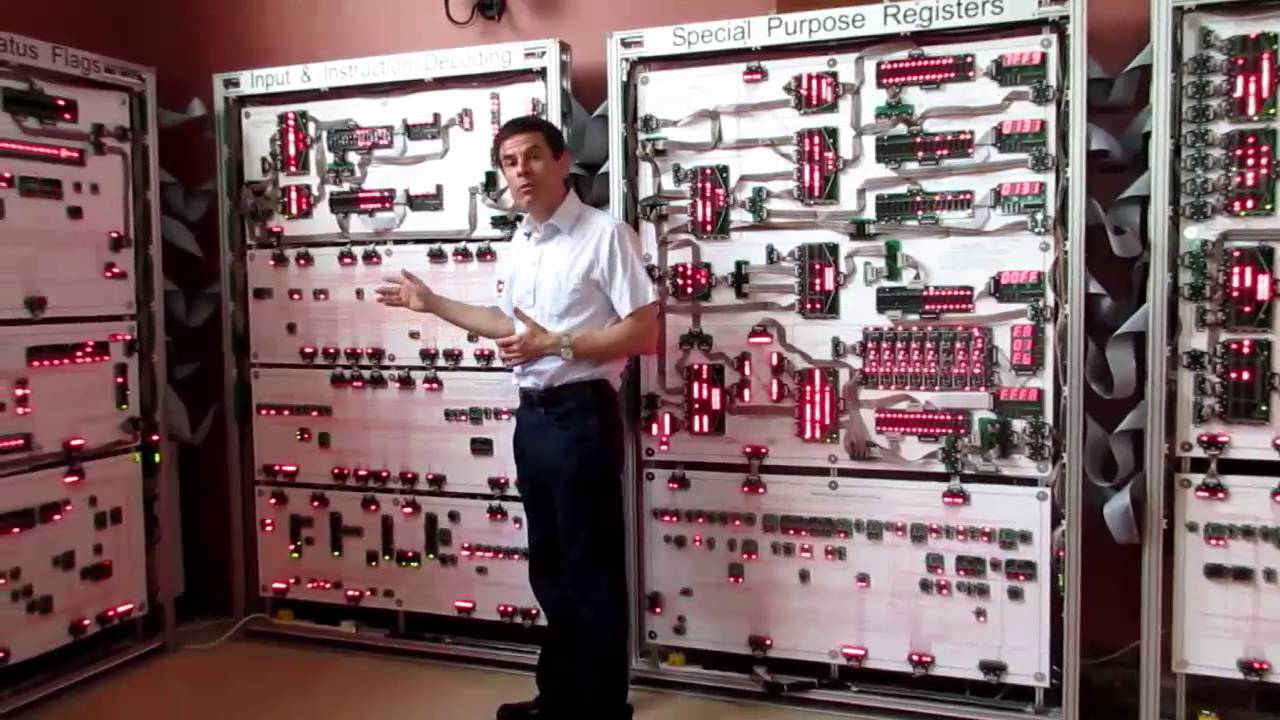Hmmm; okay.
As it turns out, the answer is not 42, it’s 42.3 — thousand. That’s how many discrete transistors spread across the 30 m2 room housing this massive computation machine. [James Newman’s] Megaprocessor, a seriously enlarged version of a microprocessor, is a project we’ve been following with awe as it took shape over the last couple of years.
[James] documented his work in great detail, and by doing so, took us on a journey through the inner workings of microprocessors. His monumental machine is now finished, and it’s the ultimate answer to how a processor – and pretty much everything that contains a processor – works.
Everyone of the ~42,300 transistors were hand-soldered to one of the massive PCBs, which look more like interactive circuit diagrams than actual circuit boards. This incredible amount of discrete transistors makes up the thousands of logic gates that eventually form the Megaprocessor’s registers, its arithmetic logic unit, its sequence control and also: its 256 bytes of RAM. Each logic gate displays the current IO state through LEDs, which also turns the RAM into a gigantic LED wall on which you can play Tetris. Despite its complexity, the Megaprocessor is pretty much self-documenting. [James] mounted all PCBs on large frames, which add up to a 10m long and 2m tall “computation display”. Detailed diagrams show the information flow between the functional blocks – and through the room.










Comments are closed.